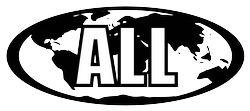- NEUE ANGEBOTE (136)
- ALLE KATEGORIEN IM WEBSTORE (4990)
-
DOKUMENTARFILME UND WOCHENSCHAUEN
(419)
- Ost- und Zentraleuropa: Geschichte und Kultur
- Deutschland
- Stunde Null in Deutschland und Europa
- Mittlerer Osten
- Der Bürgerkrieg in Spanien
- Westeuropa: Geschichte und Kultur
- Dokumentarfilme - Der Erste Weltkrieg
- Dokumentarfilme - Der Zweite Weltkrieg
- Die Deutschen Wochenschauen
- Militärgeschichte (WKI und II nicht inkl.)
- Deutsche Siedlungsgebiete im Osten
- Sowjetische Wochenschauen und Dokumentarfilme
- Diverse Dokumentarfilme
- Amerikanische Wochenschauen
- Französische Wochenschauen und Dokumentarfilme
-
KLASSISCHE FILME
(4605)
-
Filme nach Ländern geordnet
- Afrikanische Filme
- Algerische Filme
- Amerikanische Filme
- Filme aus dem Nahen Osten
- argentinische Filme
- Australische und neuseeländische Filme
- österreichische Filme
- Belarusische (Weißrussisch) Filme
- Belgische Filme
- Bosnische Filme
- Brasilianischen Filme
- Britische Filme
- Bulgarische Filme
- Chinesische Filme
- Kroatische Filme
- Kubanische Filme
- Tschechische und Slowakische Filme
- Dänische Filme
- DDR Filme
- Niederländische Filme
- Ägyptische Filme
- Estnische Filme
- Finnische Filme
- Französische Filme
- Georgische, Azerbaijani, und Armenische Filme
- Deutsche Filme
- Griechische Filme
- Ungarische Filme
- Indische Filme
- israelische Filme
- iranische Filme
- Italienische Filme
- Japanische Filme
- Kazakh Filme
- Libanesische Filme
- Litauische Filme
- Mexikanische Filme
- Moldovische Filme
- Mongolische Filme
- Nordkoreanische Filme
- Norwegische Filme
- Polnische Filme
- Portugesische Filme
- Rumänische Filme
- Russische u. ehemalige Sowjetische Filme
- Serbische Filme
- Slowenische Filme
- Spanische Filme
- Schwedische Filme
- Schweizer Filme
- Syrische Filme
- Ukrainische Filme
- Uzbek Filme
- Venezolanisch Filme
- Jiddische (Jüdische) Filme
- Vietnamesische Filme
- Filme aus dem ehemaligen Jugoslawien
- Kriegsfilme / Action und Abenteuer
- Animation
- Biographie
- Komödie
- Krimi Drama
- Drama
- Heimatfilme und Filme für die Familie
- Fantasie
- Gay und Lesbisch
- Geschichte
- Horror
- Jüdische und Holocaust-Film
- Musicals
- Thriller und Mystery Filme
- Romantik
- Nachkriegs- und Trümmerfilme
- Sci-Fi Filme
- Stummfilmzeit
- Sport
- Filme des Dritten Reiches (1933 - 1945)
- Thriller und Spionage Filme
- Kriegs- und Militärthemen
- Western
-
Filme nach Ländern geordnet
- FILM - FANARTIKEL (29)
- MUSIK (19)
- JUDAICA UND HOLOCAUST (167)
- FÜR ERWACHSENE UND SEXUALITÄT (100)
Newsletter abonnieren
Copyright © 2002-2025 RAREFILMSANDMORE.COM. All rights reserved.



